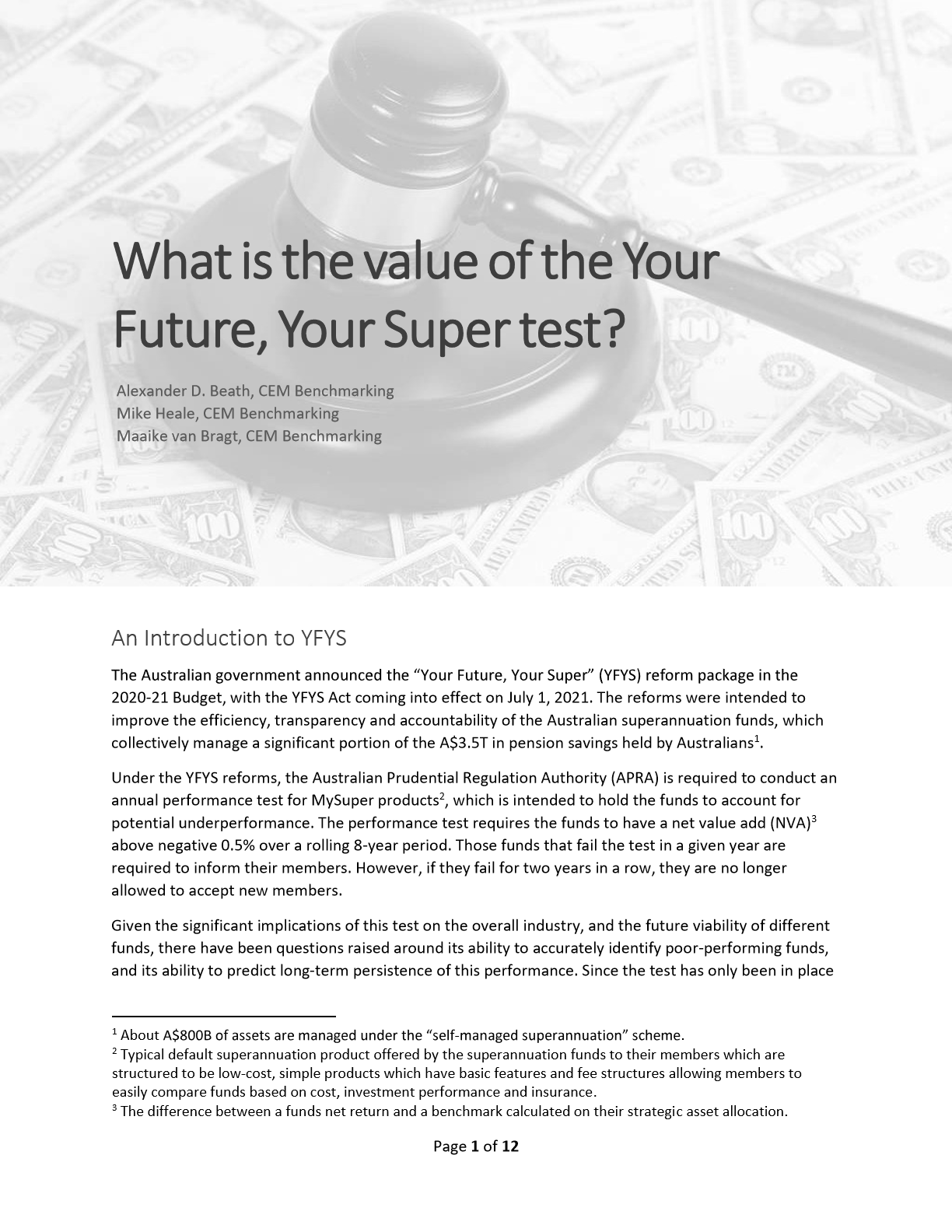Original Research
What is the value of the
Your Future, Your Super test?
Alexander D. Beath; Mike Heale; Maaike van Bragt
CEM Benchmarking
The Australian government announced the “Your Future, Your Super” (YFYS) reform package in the 2020-21 Budget, with the YFYS Act coming into effect on July 1, 2021. Under the YFYS reforms, the Australian Prudential Regulation Authority (APRA) is required to conduct an annual performance test for MySuper products, which is intended to hold the funds to account for potential underperformance. The initial performance test required default superannuation options to have a net value add (NVA) above negative 0.5% over a rolling seven-year period, with the timeframe expanded this year to eight years. In this article we apply the YFYS test retrospectively to the historical returns of over 1,000 institutional investors to assess whether the YFYS test – had it been applied to them from 1992 through 2020 – would have been able to accurately spot those that were likely to be long-term underperformers.
Key findings:
Over a 7-year time frame, 14% of investors can be expected to fail the test in any one-year timeframe.
Failure is persistent; if you fail the test in a 7-year window, the likelihood of failing the next year in an 8-year window is 77%.
The test can help improve system-level outcomes. Removing investors that fail consecutive 7-year and 8-year tests would have improved future net value added across the remaining funds from 0.22% to 0.30% over the past decade (2011-2020).
Funds that tend to fail the test more frequently tend to be smaller funds, funds that outsource a greater share of their investment activities, and funds that incur higher investment costs.
To get your copy, complete the form:
Read our Privacy Policy here. Read our Accessibility Policy here.
Copyright © 2022 CEM Benchmarking. All Rights Reserved.

